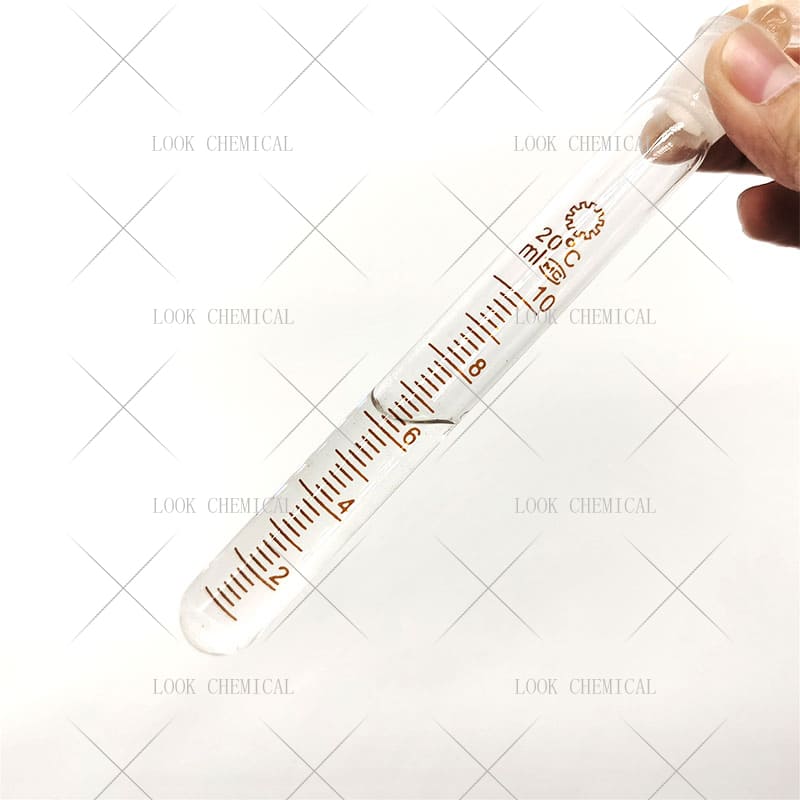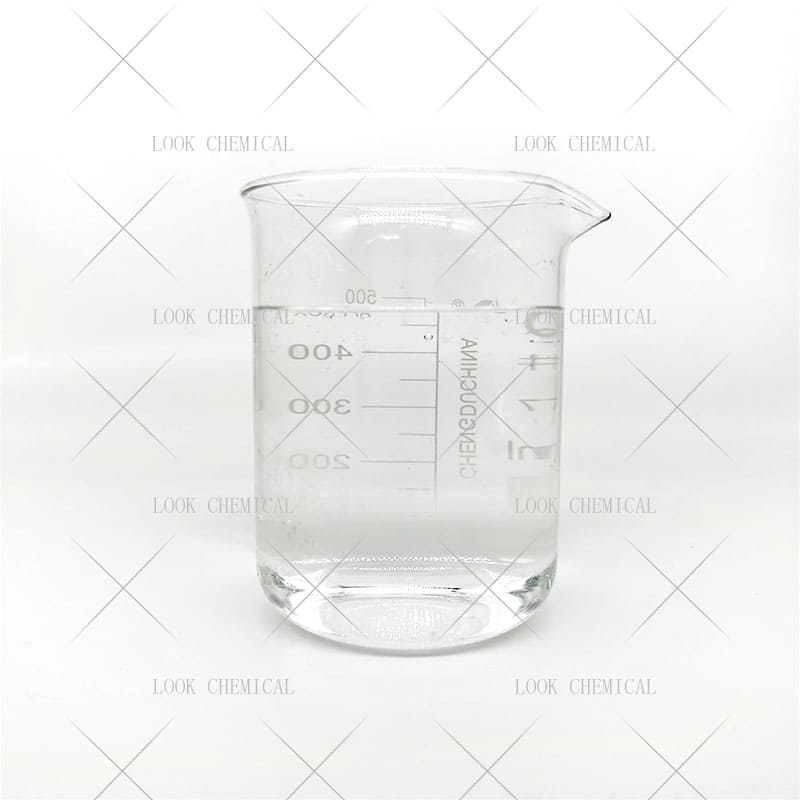Toxicity Analysis Of Dichloromethane Liquid: From Molecular Mechanisms To Real-World Warnings

Directory Guidance
introduction:
Since its industrial production in the 1940s, dichloromethane Liquid (DCM) has become the world’s third largest chlorinated solvent due to its excellent solubility and low surface tension.
In the pharmaceutical industry, it is used for antibiotic crystallization; in the electronics manufacturing industry, it is used to clean solder flux on printed circuit boards; and even in the food processing field, it is used as a caffeine remover. However, this chemical, which has an annual output of over one million tons, has become a key research object in occupational medicine and environmental toxicology due to its acute neurotoxicity, chronic organ damage and potential carcinogenicity.
According to data from the World Health Organization (WHO), there are more than 12,000 cases of occupational diseases caused by dichloromethane Liquid exposure worldwide each year, of which 5% are fatal poisonings. This article will start from the molecular toxicological mechanism, combine interdisciplinary research results with international regulatory practices, and systematically analyze the full picture of the risks of dichloromethane Liquid.
1.Physical and chemical properties and toxicological basis: invisible killer that penetrates cell membranes
(1)The molecular structure of Dichloromethane Liquid (CH₂Cl₂) gives it unique physical properties:
Fat solubility: octanol-water partition coefficient (log Kow) 1.25, allowing it to penetrate the blood-brain barrier and placental barrier;
Metabolic dual pathways: About 60% are oxidized to CO and formic acid by cytochrome P450 2E1 (CYP2E1), and 40% rely on glutathione-S-transferase θ1 (GSTT1) to convert to formaldehyde and thiodiglycolic acid.
(2)Metabolic dynamics difference:
There are significant differences in metabolic rates between humans and rodents. GSTT1 activity in humans is genetically polymorphic: about 30% of the Asian population and 15% of the Caucasian population carry the GSTT1 deletion genotype (*GSTT1* null), and the detoxification ability of Dichloromethane Liquid in this population is reduced by 3 times, and the risk of cancer is increased to 7.2 times that of the general population.
(3)Acute toxicological model:
Through dynamic inhalation exposure experiments, it was found that Dichloromethane Liquid was absorbed in the lungs at a rate of up to 85%, and its metabolite CO had 240 times the binding force with hemoglobin than oxygen. When the concentration of carboxyhemoglobin (COHb) in the blood exceeds 20%, the respiratory chain of cardiomyocytes mitochondria is blocked, and the rate of ATP synthesis is reduced by 40%, which directly leads to cardiogenic shock.
Exposure to high concentrations of Dichloromethane Liquid (>1000 ppm) can trigger multiple organ failure within 30 minutes:
Central nervous inhibition: By activating GABA-A receptors, the internal flow of chloride ions is enhanced, resulting in hyperpolarization of neurons;
Myocardial hypoxia: Increased COHb reduced coronary oxygen content to the critical value (<15 vol%);
Hepatocyte necrosis: the combination of formaldehyde and glutathione leads to the breakdown of the antioxidant system, and the level of malondialdehyde (MDA) surges;
Renal tubule blockage: calcium oxalate crystal deposition causes acute kidney injury (AKI).
In-depth analysis of typical acute poisoning cases:
In a 2019 industrial accident in Ohio, USA, three workers used Dichloromethane Liquid to clean equipment inside a closed storage tank. The accident simulation showed that the vapor concentration in the tank rose to 5,000 ppm within 10 minutes. The first worker passed out within 30 seconds of entering, and the second died of ventricular fibrillation caused by inhaling higher concentrations of vapor (which peaked at 8,000 ppm) while trying to rescue him. Autopsy revealed that the alveolar of the deceased was filled with pink foam fluid, the brain tissue had stratified necrosis, and the liver ALT level was up to 1200 U/L (normal value <40 U/L). This case reveals the “co-toxicity” of Dichloromethane Liquid: CO induced hypoxia forms a vicious cycle with the direct cellular damage of formaldehyde.
The health damage caused by long-term low-dose exposure (50-200 ppm, 8 hours/day) is progressive and irreversible:
Neurological degeneration:
A 15-year follow-up study of German aircraft maintenance workers found that the gray matter volume of the prefrontal cortex of the exposed group decreased by 0.8% per year, which was significantly higher than the control group (0.3%). PET scans showed an 18% decrease in dopamine D2 receptor density, which was directly associated with a decrease in working memory (WAIS-IV score decreased by 12%) (Ludwig et al., 2021).
Mechanism of liver fibrosis:
In vitro hepatocyte models confirmed that 50 μM Dichloromethane Liquid metabolites could upregulate TGF-β1 expression by 3 times, activate hepatic stellate cells to transform into myofibroblasts, and increase the collagen deposition rate to 2.7 times that of the control group. Clinical data showed that the incidence of cirrhosis in occupationally exposed people was 4.3 times that of the non-exposed group.
New findings in immunotoxicity:
A study published in the 2023 Journal of Toxicology revealed that Dichloromethane Liquid can inhibit the T cell receptor (TCR) signaling pathway: by downregulating ZAP-70 phosphorylation levels (reduced by 67%), blocking IL-2 secretion, and causing loss of CD4+ T cell proliferation ability. This explains why the antibody response rate to influenza vaccines in exposed people decreased by 40%.
4.Carcinogenicity and mutagenicity: the complex game of gene and environment interaction
Although Dichloromethane Liquid is classified by the IARC as a Class 2A carcinogen, its carcinogenic mechanism remains controversial:
Epigenetic evidence:
Genome-wide methylation analysis of peripheral blood lymphocytes from exposed populations showed that the promoter region of the tumor suppressor gene RASSF1A was 12 times more methylated, while the degree of LINE-1 transposon demethylation reached 35%. Such epigenetic disorders may occur earlier than genetic mutations (Zhang et al., 2022).
Effects of metabolic enzyme gene polymorphisms:
Individuals carrying the CYP2E1*5B mutant allele (rs3813867) were 2.3 times more efficient at converting Dichloromethane Liquid to formaldehyde. Cohort studies have shown an increased risk of lung cancer 3.8 times that of wild-type people (95%CI: 1.6-9.1).
Dose paradox in animal experiments:
In mouse inhalation studies, the incidence of liver tumors was significantly increased only at moderate doses (1500 ppm), while no tumor growth was observed in the high-dose group (3000 ppm) due to shortened survival due to acute toxicity. This suggests that the carcinogenicity of Dichloromethane Liquid has a nonlinear dose-response relationship.


5.Environmental behavior and ecotoxicity: Invisible pollution across media
The environment of Dichloromethane Liquid tends to show the characteristics of multi-media migration:
Atmospheric photochemical conversion:
Under stratospheric ultraviolet light, DCM reacts with OH radicals to form formyl chloride (HCOCl), which is further hydrolyzed to HCl and CO. The model calculation shows that the emission of 1 ton of Dichloromethane Liquid can produce 0.38 tons of HCl, resulting in a decrease of 0.3 units in precipitation pH value (Wang et al., 2023).
Aquatic ecological chain effect:
In simulated estuarine tank experiments, exposure to 0.5 mg/LDichloromethane Liquid reduced copepods’ reproductive rate by 54%, which in turn resulted in a 32% reduction in the survival rate of their predators (cod larvae). This trophic cascade effect has been field-tested in the Baltic Sea polluted area.
Bioaccumulation of soil-plant systems:
The results of tritium labeling showed that Dichloromethane Liquid could be absorbed by wheat roots and transported to the grain with a bioenrichment coefficient (BCF) of 0.18. Although it does not exceed EU food safety standards, it indicates the risk of exposure to the food chain.
6.International regulatory Cases: The Tussle between policy and Science
The turning point of the legislative process in the United States:
The death of California resident Emma Blackwell in 2018 directly pushed for an EPA ban. This 32 year old woman experienced an increase in indoor concentration to 2500 ppm due to poor ventilation while renovating a baby room using a paint stripper containing Dichloromethane Liquid. . Despite being rushed to hospital, his blood oxygen saturation remained below 70% and he died of brain stem failure. This incident led to the 2019 Dichloromethane Liquid Consumer Safety Act, which requires industrial-grade products to have a bitter (denatonium benethonium) added to prevent misuse.
Eu’s preventive control innovation:
The German Federal Institute for Risk Assessment (BfR) has developed a physiologically based pharmacokinetic model (PBPK) that integrates GSTT1 genotypes, exposure scenarios, and individual lung capacity parameters to enable personalized risk prediction. The model successfully reduced occupational exposure standards from 50 ppm to 20 ppm, resulting in a 62% reduction in liver injury cases.
The governance dilemma of developing countries:
A survey of industrial clusters in Gujarat, India shows that 85% of small electroplating plants have not installed waste gas treatment devices, and the concentration of formic acid in workers’ urine is as high as 126 mg/L (background value<12 mg/L). The regulatory vacuum of local governments and the high cost of alternative solvents (Dichloromethane Liquid price is only one-third of butyl acetate) form a vicious cycle.
7. Protection technology innovation and precision medicine intervention
Intelligent upgrade of engineering control:
The real-time monitor-adsorption system developed by Toray, Japan, captures Dichloromethane Liquid vapor through a metal-organic framework material (MOF-303) at room temperature with an adsorption capacity of 412 mg/g, which is 5 times higher than that of traditional activated carbon.
Breakthrough in biological monitoring technology:
The breath omics analysis based on mass spectrometry can detect 0.1 ppb of thiodiglycolic acid within 2 hours after exposure, which is 100 times more sensitive than traditional urine detection. In 2023, Shenzhen Occupational Disease Prevention and Control Institute will include this technology in pre-job screening, increasing the detection rate of early liver damage from 12% to 89%.
Gene-directed personal protection:
GSTT1 and CYP2E1 genotypes were detected by PCR-RFLP, and the practitioners were divided into high, medium and low risk groups. The high-risk group was banned from working in confined Spaces and the medium-risk group was forced to wear ventilated respirators, a strategy that resulted in a 91% reduction in occupational poisoning accidents at a semiconductor plant in Singapore.
Conclusion: Towards a risk-controlled future
The toxic nature of Dichloromethane Liquid is the result of the combination of chemical properties, metabolic kinetics and environmental exposure scenarios. With the development of single-cell sequencing and organ-on-a-chip technology, its chronic toxicological mechanism is being analyzed layer by layer. The Global Harmonized Classification of Chemicals (GHS) and the promotion of the Green solvent alternative program are restructuring the risk management system from the policy level. It is worth noting that the ionic Liquid [BMIM][NTf2] developed by the MIT team in 2024 has achieved PCB cleaning efficiency comparable to Dichloromethane Liquid, and the biodegradation rate has increased to 98%. This indicates that at the intersection of toxicology and green chemistry, mankind will eventually find the balance of efficiency and safety.
